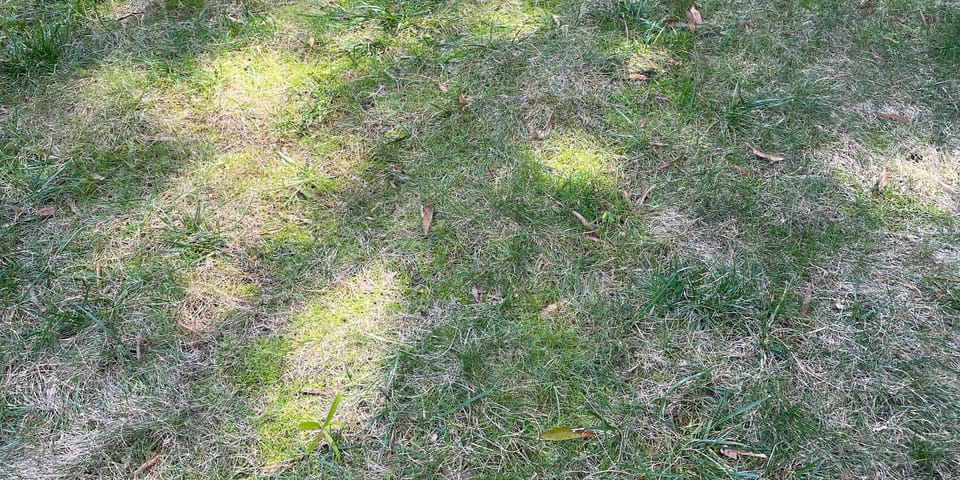Brown, Patchy Lawn? Here’s How to Figure Out What’s Wrong

Follow these steps:
1. Insect Damage
- Look for caterpillars: Spread the damaged grass with your fingers. If they’re there, you’ll see them crawling.
- Test the roots: Grab a handful of grass and tug. If it lifts up like a rug—roots gone but blades intact—grubs are the culprit.
- Dig and check: Pull back some soil. White, C-shaped grubs mean you’ve found your problem.
- Insect Damage? Follow this guide.
- If you see none of the above, go to #2.
2. Fungus
- Check the blades: Brown spots or lesions? Entire blade straw-white? Greasy or matted look?
- Step back: Are the patches circular or blotchy? Do they have a darker ring?
- Morning clue: Webby or cotton-like growth early in the day often means fungal activity.
- Fungus? Follow this guide.
- If nothing matches, head to #3.
3. Drought Stress
- Screwdriver test: Push a screwdriver into the soil. If it slides in easily, moisture isn’t the issue. If it’s hard to push in, your soil is dry and compacted.
- Not enough water? Follow this guide.
- Still not it? On to #4.
4. Heat Stress
- What you’ll see: Thin, wispy blades that wilts or turns straw-colored during hot spells. Blades may curl inward.
- Pattern: Damage matches where the afternoon sun hits hardest, even if you’ve been watering.
- What can you do? Make sure you use the right seed next year.
It's not uncommon to have multiple issues simultaneously, so be sure to check all of these things periodically.
